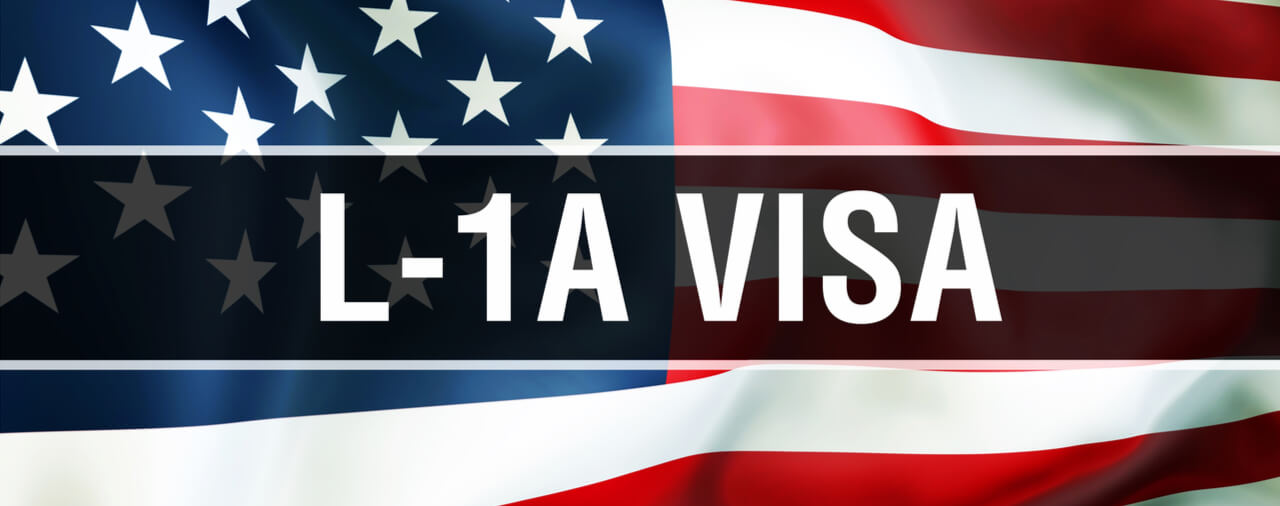- Introduction
- Working in an Executive or Managerial Capacity
- Managerial Capacity
- Executive Capacity
- Duration of Stay and Adjustment of Status
- Advice
Introduction
This article will provide an overview of the requirements for eligibility for an L1A Intracompany Transferee Executive or Manager Visa, and explain what the petitioning entity and the L1A beneficiary must do in order for the beneficiary to remain in L1A status. In order to learn more about which aliens qualify for L1 visas in general and which entities may petition for L1 visas, please see our overview of L1 visas in general [see article]. To learn about L1 visas for jobs that intracompany transferee jobs that require “specialized knowledge”, please see our article on L1B visas [see article].
We cover bringing domestic workers of L1 intracompany transferees on B1 visas in a separate article [see article].
Working in an Executive or Managerial Capacity
In order to qualify for an L1A visa, the petitioner must be petitioning for the intracompany transferee beneficiary to work in for the petitioner in the United States in a “managerial” or “executive” capacity. In order to qualify as a manager or executive for L1A purposes, the intended beneficiary must have worked in a managerial or executive capacity full time at the associated entity abroad with the petitioner abroad for at least 1 year in the 3 years immediately preceding the filing of the petition.1 However, the intended beneficiary does not have to be transferred in exactly the same capacity that he or she worked in abroad.2
There are limited circumstances in which an intended beneficiary who worked as a self-described independent contractor for the 1 year requirement, or worked for a different company abroad that was contracted by a foreign entity with a qualifying relationship to the petitioner for the 1 year requirement, may qualify for L1A status. Pursuant to regulations found in 8 C.F.R. § 274a.1(j), the following will be considered by United States Citizenship and Immigration Services (USCIS) in determining whether, a person or entity is considered independent contractor for purpose of immigration benefits:
Whether the individual or entity supplies the tools or materials as opposed to the client;
Whether the individual or entity made his, her, or its services available to the general public;
Whether the individual or entity worked for other clients at the same time;
Whether the individual or entity had an opportunity for profit or loss as a result of services rendered;
Whether the individual or entity directed the order or sequence in which work was done and determined the hours during which the work was done.
This regulation is not intended to be exhaustive, but rather a list of factors that USCIS will generally consider in making a determination with regard to whether an employee or an entity was an independent contractor.
Also see Matter of Smith, 12, I&N Dec. 772 (1968) [PDF version] where it was decided that a company petitioning for a nonimmigrant visa for a secretary who it would refer to other companies was the secretary’s employer because, among other things, the petitioner would guarantee a salary, full time employment, benefits, and vacation time.
Pursuant to section 101(a)(44)(C) of the Immigration and Nationality Act (INA), the Attorney General must take into account “the reasonable needs of the organization, component, or function” if staffing levels are used as a factor for determining whether an employee would be working in a managerial or executive capacity. Furthermore, the number of employees that an individual supervises, has supervised, directs, or has directed, will not by itself prove that the individual is or was acting in a managerial or executive capacity.
The Administrative Appeals Office has held that a petitioner is only required to show that the intended beneficiary will spend more than half of his or her time engaged in managerial or executive duties in order to qualify as an L1A.3
According to the AAO’s opinion in Matter of ___, NSC (AAO Dec. 10, 2012) adjudicators may not solely rely upon the job description to determine if the intended beneficiary will serve in a managerial or executive capacity.4 The decision listed for factors that adjudicators must consider in deciding whether the intended beneficiary will serve in a managerial or executive capacity:
(i) where the beneficiary will be employed;
(ii) the entity’s organizational hierarchy;
(iii) the beneficiary’s position therein; and
(iv) evidence of the company’s overall ability to relieve the beneficiary from having to primarily perform the daily operational tasks of the business.5
Thus, USCIS adjudicators must consider a variety of factors ranging from the qualifications of the intended beneficiary, the details of the proposed employment, and the organizational structure of the petitioner.
Adjudicators have held that it is possible to qualify as a manager or executive even when the intended beneficiary is the sole employee of the company, provided that he or she uses independent contractors or where the organization of the business is complicated.6 However, it is important to remember that L1A visas are not intended to facilitate self-employment in the United States.7
Managerial Capacity
“Managerial capacity” is defined in INA § 101(a)(44)(A). Pursuant to that section of the INA, “managerial capacity means an assignment within an organization in which the employee primarily –
(i) manages the organization, or a department, subdivision, function, or component of the organization;
(ii) supervises and controls the work of other supervisory, professional, or managerial employees, or manages an essential function within the organization, or a department or subdivision of the organization;
(iii) if another employee or other employees are directly supervised, has the authority to hire and fire or recommend those as well as other personnel actions (such as promotion and leave authorization) or, if no other employee is directly supervised, functions at a senior level within the organizational hierarchy or with respect to the function managed; and
(iv) exercises discretion over the day- to-day operations of the activity or function for which the employee has authority. A first-line supervisor is not considered to be acting in a managerial capacity merely by virtue of the supervisor’s supervisory duties unless the employees supervised are professional.
In order for a first-line supervisor to qualify as manager, he or she must be supervise professionals.8 However, Courts and the AAO have consistently held that the language of the statute does not limit managers to persons who supervise a specific number of professionals.9
Executive Capacity
“Executive capacity” is defined in INA § 101(a)(44)(B). Pursuant to that section of the INA, “executive capacity” means an assignment within an organization in which the employee primarily –
(i) directs the management of the organization or a major component or function of the organization;
(ii) establishes the goals and policies of the organization, component, or function;
(iii) exercises wide latitude in discretionary decision making; and
(iv) receives only general supervision or direction from higher level executives, the board of directors, or stockholders of the organization.
In order to demonstrate that an intended beneficiary will work in an executive capacity, it is important to show that he or she will have significant responsibilities regarding the direction of the organization and that he or she will have broad discretion to make decisions to that effect.
Duration of Stay and Adjustment of Status
Unless an L1A beneficiary is being admitted to open a “new office,” he or she may be admitted initially for 3 years on L1A status, or for the period of validity approved by the consular officer, whichever is shorter [9 FAM 41.54 N20.2]. In the case that the petitioner is a “new office,” the initial L1 approval may not be in excess of 1 year, in which time the new office must satisfy the requirement that it be able to employ a manager or executive for the petition to be reapproved [9 FAM 41.54 N11.1]. The petition may be reapproved in 2-year increments, but not in excess of 7 years total [INA § 214(c)(2)(D)(ii)]. Time spent outside of the United States may be recaptured and added to the 7 years that may be spent on L1A status.10
In the event that the L1A beneficiary’s duties significantly change while on L1A status, or if he or she is transferred from one company to another in the same organization where the beneficiary will have a new employer, the petitioner will be required to file an amended petition.11
An L1A may work part-time for multiple subsidiaries of the same company, but the new subsidiary must file a petition to establish a qualifying L1 relationship. However, the original petitioner is not required to file an amended petition if the change in the relationship between it and the beneficiary is not significant.12 In this scenario, an experienced immigration attorney may help the petitioning entity determine if an amended petition is required.
Full time employment is not a requirement to remain in valid L1A status, however, the L1A beneficiary must devote a significant portion of time on a regular and systemic basis to performing the work for the petitioner that he or she obtained an L1A visa for.13
L1A beneficiaries may apply for adjustment of status through the EB-1 category and be approved without labor certification.14
Advice
As noted in our article on general L1 requirements [see article], it is always wise for a petitioning entity to retain an experienced immigration attorney for the petitioning process. For L1A visas, it will be important to demonstrate that the intended beneficiary worked in a similar, although not necessarily the same, capacity abroad as he or she will for the petitioner. Furthermore, the petitioner must demonstrate that the intended beneficiary is qualified. Depending on the specific facts of the intended work, demonstrating that the intended beneficiary will work as a manager or executive may be relatively straightforward [e.g., the beneficiary would be managing many professionals, or the beneficiary would be an executive clearly focused on exercising discretion to make decisions about the operational direction of the petitioner] or complicated. Generally, smaller petitioning entities where the intended L1A beneficiary may be required to take on additional responsibilities not consistent with being a manager or executive may have a difficult time demonstrating eligibility. In those cases, the petitioning organization must show that this is necessitated by facts specific to the petitioning organization, and that the L1A beneficiary would still spend most of his or her time working in a managerial or executive capacity. “New offices” will also be subject to higher scrutiny from USCIS.
In the event that the intended beneficiary is ineligible for an L1A visa, the petitioning organization should consult with an experienced immigration attorney to determine if a different immigration solution may be available.
If there is any ambiguity about whether the intended beneficiary was an independent contractor, or worked in a managerial or executive capacity for an entity overseas that was ostensibly the client of an entity with a qualifying relationship to the petitioner, the petitioner should consult with an experienced immigration attorney for a full assessment of the situation and for assistance in compiling a case that the intended beneficiary should qualify as an employee of the qualifying organization overseas rather than as a contractor or employee of a contractor.
An experienced immigration attorney will also be of great assistance in determining whether an amended petition is required due to a change in the relationship between the petitioning entity and the beneficiary.
An L1A beneficiary should consult an experienced immigration attorney for assistance in demonstrating that he or she qualifies for L1A status, in obtaining derivative L2 visas for spouses or unmarried minor children, or for obtaining a B-1 visa for a domestic servant or assistant. Furthermore, an L1A beneficiary should consult with an experienced immigration attorney for assistance in applying for change or adjustment of status if he or she is interested in doing so.
- I. Kurzban, Kurzban’s Immigration Law Sourcebook: A Comprehensive Outline and Reference Tool (AILA 14th Ed. 2014) 1001, citing AFM at 32.3(b); Matter of Vaillancourt, 13 I&N Dec 645 (RC 1970)
- Id.
- Kurzban 1002, citing Matter of __, WAC 09-227, CSC (AAO Dec. 15, 2011), published on AILA InfoNet at Doc. No. 11122324 [marketing director position that included supervising employees in a different country]; Matter of __, WAC, CSC (AAO Nov. 16, 2012), published on AILA InfoNet at Doc. No. 13012348 [Restaurant manager where the majority of nonmanagerial tasks are carried out by subordinates and the manager oversees three departments].
- Kurzban 1002, citing 9 FAM 41.54 N.9.4.
- Id.
- Kurzban 1002, citing Matter of Irish Dairy Board, Ltd, File No. A28-845-421 (AAU Nov. 16, 1989), reported in 66 No. 46 Interpreter Releases 1329-30 (Dec. 4, 1989); IKEA U.S., Inc. v. INS, 48 F.Supp.2d 22 (D.D.C. 1999)
- Kurzban 1001
- Id.
- Kurzban 1001, citing National Hand Tool Corp, v. Pasquarell, 889 F.2d 1472, n.5 (5th Cir. 1989); Mars Jewelers, Inc. v. INS, 702 F.Supp. 1570, 1573 (N.D. Ga. 1988); Matter of __ (AAO CSC WAC Sept. 13, 2013), reported in 19 Bender’s Immigr. Bull. 93, 114 (Jan. 15, 2014); Matter of __ (AAO WAC Nov. 16, 2012), reported in 18 Bender’s Immigr. Bull. 483, 507 (May 1, 2013); Matter of __, WAC 10 081 50986, CSC (Jan. 19, 2011)
- Kurzban 1006, citing Matter of IT Ascent, EAC 04-047-53189 (AAO Sept. 2, 2005), published on AILA InfoNet at Doc. No. 05102760; Memo, Aytes, Acting Assoc. Dir. Operations, HQPRD 70/6.2.8, 70/6.2.12, AD 05-21 (Oct. 21, 2005), published on AILA InfoNet at Doc. No. 05110363; AFM 32.6(g)
- Kurzban 1007, citing 8 C.F.R. § 214.2(l)(7)(i)(C)
- Kurzban 1007, citing Letter, Weinig, Deputy Asst. Comm, CO 245-P (Dec. 18, 1987), reprinted in 65 No. 19 Interpreter Releases 509, 518-19 (May 16, 1988)
- Kurzban 997, citing O.I. § 214.2(l)(5)(ii)(B)
- Kurzban 1001
Resources and materials:
Kurzban, Ira J. Kurzban’s Immigration Law Sourcebook: A Comprehensive Outline and Reference Tool. 14th ed. Washington D.C.: ALIA Publications, 2014. 997, 1001-1002, 1006-1007, Print. Treatises & Primers.





